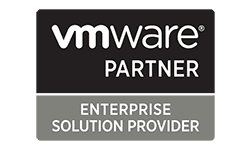What is Agile Workflow? Breaking Down the Popular Management Methodology
Agile Project Management Methodology Can Help Your Team Succeed
Carley Kimball, Media Specialist
5 Min Read
While the topic has gained traction in workplaces over the years, many people still find themselves wondering, “what is an agile workflow?” This article will breakdown the agile workflow methodology so you can utilize this modern agile leadership style to lead your team to success.
What is Agile?
Agile is the ability to create and respond to change. It is a way of dealing with, and ultimately succeeding in, an uncertain and turbulent environment, according to the Agile Alliance.
The mentality behind agile made its debut in workplaces before the official manifesto was published. Within the software development community, key factors for how work should be completed efficiently arose. Professionals were frustrated within the industry and felt that a widescale adoption of workflow principles would vastly improve timeline completion and resource allotments.
In 2000, seventeen “thought leaders,” met at a resort in Oregon to discuss their ideas on how to improve their industry as a whole.

Continuing the conversation in 2001, they met at The Lodge at Snowbird Ski Resort in Utah. The result of these two summits? The Agile Manifesto. The authors of the Agile Manifesto, released in 2001, chose the term “Agile” because it embodied an essential idea for the concept – adaptative response to change.
Close collaboration between the development team and business stakeholders; frequent delivery of business value, tight, self-organizing teams; and smart ways to craft, confirm, and deliver code were of high importance.
Ultimately, Agile is a mindset informed by the Agile Manifesto’s values and principles. These values and principles provide guidance on how to create and respond to change and how to deal with uncertainty, the Agile Alliance explains.
Another way to consider Agile is an approach to project management that centers around incremental and iterative steps to completing projects. The incremental parts of a project are carried out in short-term development cycles. The approach prioritizes quick delivery, adapting to change, and collaboration rather than top-down management and following a set plan, according to Coursera.
Agile project management was established on four values and twelve principles outlined in the Agile Manifesto. The first value is individuals and interactions over processes and tools, which places a high importance on the people who drive a company’s success. Working on software over comprehensive documentation also arose as a key value to save time and streamline processes. Customer collaboration over contract negotiation encourages regular feedback that ensures a product is meeting the needs of the client throughout the process. Responding to change over following a plan harkens back to the cornerstone of agile – adaptability.
The twelve principles outline early and frequent delivery, simplicity, constant feedback, the collaboration of interested parties, and individual support, among other principles, as the pillars of Agile project management.
Agile is an umbrella that encompasses several specific and hybrid methodologies:
- Scrum
- Kanban
- Lean
- Crystal
- Extreme Programming (XP)
- Feature-Driven Development (FDD)
- Domain-Driven Design (DDD)
- Dynamic Systems Development Method (DSDM)
- ScrumBan
- Agile-Waterfall/Hybrid Agile
- Scrum XP Hybrid
Benefits and Challenges of Agile
While the approach was implemented in the software development industry first, it has been proven as a beneficial workflow for finance, IT, business, fashion, biotechnology, construction, and more. The framework has become widely used on a global scale.
Agile is used by at least 71% of U.S. companies. Additionally, Scrum is the most popular Agile framework, with 61% of respondents from 76 countries reporting that they use it, according to statistics provided by Zippia. Within the IT world, 80% of projects use Agile methodology. Although many companies have made the switch from traditional waterfall management to a more agile approach, there are criticisms that remain of the methodology.
Initially, the shift from one management style to another can take time and challenge teams that still are required to meet deadlines on a regular basis. Adjusting to a new approach to deliver to a client can cause frustration as leaders and employees adjust to the learning curve.
The fluidity of agile can be challenging for those who are used to high accuracy when it comes to planning, deadlines, and determining costs. Variable goals within a department can lead to a lack of specific goals for a team. One way to prevent variable goals from allowing unwarranted costs or missed deadlines can be to schedule regular meetings to discuss goals. Another way to unify goal costs is to set a policy regarding spending in the department so that cash flow follows a policy to reduce unforeseen spending, an article from Indeed suggests.
Regular one-on-one check-ins, fair goal-related task allocation, and encouraging an environment in which team members can be open with their ideas and concerns can help the entire team prioritize and stay on task, despite unpredictable circumstances. These ideas pivot back to the importance of adaptability.
Despite criticisms, there are quite a few positive aspects of implementing agile workflows.
Data shows project completion timelines are significantly cut down compared to traditional management methodologies. Within the federal sector, IT projects have seen their average development time shrink from nine years to two years, saving tremendous amounts of time, money, and resources. Because the goal is product placement, there is a large focus on efficiency and process optimization.
Feedback is an essential tool for the success of agile implementation. Through frequent feedback on all levels – teams, management, stakeholders – collaboration is made easy. There shouldn’t be much guessing on expectations, which streamlines deliverable timelines. In this same regard, transparency is the key to addressing issues before they snowball.
With efficiency comes increased performance, workplace satisfaction and low turnover. In an agile environment that encourages growth, learning, and valuable and relevant task allocation within teams, companies are bound to see increased investment from their employees and higher profits overall.
There’s no denying that agile workflow methodology has taken the business world by storm. As leaders and decision makers continue to seek opportunities to create a more efficient workplace and retain valuable employees, agile implementation will surely continue to grow.




